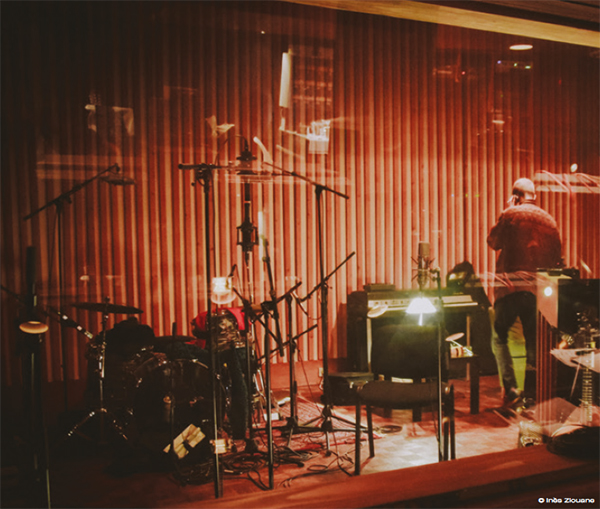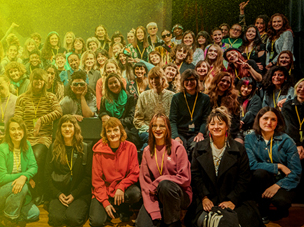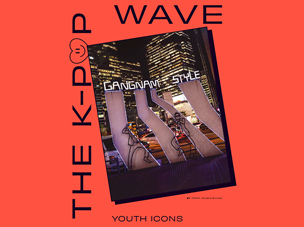For decades, artists have flocked to this address.

© Inès Ziouane
Studio Ferber, with its oak floors and legendary mixing consoles, remains an inspiration to those seeking to capture sound in its purest form. Steeped in history, driven by passion, always with an eye to the future.
When Renaud Letang first began working at Studio Ferber in 1993, the 22-year-old sound engineer was contracted to record and mix Alain Souchon’s album C'est déjà ça, which included the hit single “Foule Sentimentale.” “I just fell in love with the sound quality,” he remembers. “It was so beautiful, I couldn't believe my ears. I immediately took my demo tape to the Guillaume Tell studio to listen to it there, just to make sure my ears weren’t playing tricks on me.” But the sound was indeed just that good and thirty years later, the man who eventually became the studio manager is still in love with Ferber’s acoustics.
The story begins in 1973 when René Ameline founded the studio in Paris's 20th arrondissement. Building on the success of the hit songs he recorded at Studio Davout for such artist as Esther Galil and the Poppys, and Michel Delpech (“Pour un flirt”, which sold 1 million copies), the sound engineer went on to acquire an old factory space where irons were manufactured on Rue Ferber, tearing everything down but the walls. In this stunning space he designed a tastefully matte acoustic environment with wood-panelled walls, solid oak flooring, and high ceilings reaching up to 7 metres in Studio A with its 187 m² that can accommodate up to 60 musicians. This quality set-up immediately positioned Ferber at the cutting edge of music-making at the time. Some of their recording equipment was even tailor-made on site, and before long the studio boasted a Neve series 82-84 mixing deck envied by professionals around the world. Some of France’s top artists flocked to the studio, including Julien Clerc, Claude Nougaro and Marie Laforêt. Perhaps most importantly, producer Francis Dreyfus chose Ferber to showcase the artists of his budding record label, Motors, such as Christophe who recorded his album Les Paradis perdus, which included a homage entitled “Ferber endormi”: La séance est finie / Le dernier musicien est parti / Au milieu d’un studio / Endormi, je regrette / Ces lointains paradis / Paradis (It’s a wrap / The last musician gone / Alone in the studio / Sound asleep, longing for / The heavens in the distance / The heavens). With the advent of new synthesizer technology in the 70s and 80s, many studios were left behind. Ferber however was not one of them, managing to branch out into music for cinema, television and advertising. Gainsbourg, Dutronc, Lavilliers, Higelin, Karen Cheryl, William Sheller, Bijou, Jean-Michel Jarre, Cerrone, Juliette Gréco, Aznavour, Cabrel… From French music classics to the new wave of disco, the list goes on. And then there was jazz, with Francis Dreyfus producing such legends as Michel Petrucciani, Richard Galliano, Biréli Lagrène, to name a few. Studio A was busy as ever.
Renaud Letang, however, much preferred working in Studio B: “The booth has the most incredible neutral sound.” It was in this very booth that he recorded “Clandestino” for Manu Chao in 1998, and went on to work full-time for Ferber. He became such a fixture that René Ameline designated the producer as his successor before passing away in 2014. Having snatched Ferber back from the clutches of property developers, Renaud Letang now runs the studios with his partner Mohamed Saadi and manager Jean-Christophe Le Guennan. Working with architect Pablo Gallego, he spearheaded the full restructuring of the studio: “To create the perfect atmosphere, we blended a 1970s aesthetic with cutting-edge recording equipment,” he says. “I restored Ferber like a piece of antique furniture.”
They also restructured the business model to involve smaller booths, still boasting top-shelf equipment, which they rented out on a yearly basis. Ferber ended up opening eleven additional recording booths alongside the legendary Studio A, B and D (which was mostly dedicated to mixing). Scaling up as their reputation grew, the studio was a mainstay for both French artists (Alain Bashung, Vanessa Paradis, Philippe Katerine, Oxmo Puccino, Martin Solveig) and international creators, from Cat Stevens to Nick Cave, Iggy Pop and Black Sabbath. Ferber’s success remains the stuff of legend: their booking schedule was said to be so packed that they had to turn down Prince in 2014, and their archives are rumoured to contain exclusive unreleased recordings of Nina Simone and Frank Zappa. From Clara Luciani and Jeff Mills in Studio A to Chilly Gonzales and Lianne La Havas in Studio B, Ferber is still making history. Their success extends even into music for cinema, with recent work for The Count of Monte Cristo and Emilia Pérez.
Gabriel Yared, Oscar-winning composer for The English Patient, recorded numerous soundtracks at Ferber Studio (The Lover, City of Angels, The Marmots, Message in a Bottle, Azur and Asmar). He remains one of the most loyal customers since the studio’s earliest days in 1973: “Ferber is like my adoptive family. I experienced some of my greatest joys right here in this studio,” he says. “I still remember working with René Ameline, a truly exceptional person, as well as other friends from the early days like Jean-Claude Dubois and Georges Rodi. I love the acoustics, the depth and warmth of their sound, and they have made an art of capturing every detail with remarkable fidelity. The Ferber sound has a signature, it has a soul you won't find anywhere else.” The studio now hosts film-shoots, concerts, even corporate seminars, diversifying its activities to remain at the forefront of the industry, and consistently ranks alongside Abbey Road in London and Electric Lady in New York as one of the most sought-after music studios in the world.
BY Marc Augier
Published August 18 2025


